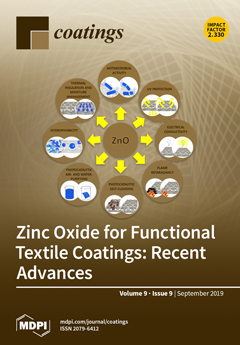The aim of the present study was to check the influence of the Hamaker constant (A(h)) on the calculated critical thickness of foam films. It was done by a comparison between the experimental data of the critical thickness and the theoretically obtained data with different values of (A(h)), which take part in the equations of Radoev, Scheludko, Manev, and Vrij. We calculated the latter for film thicknesses from 15 to 70 nm based on several equations. We used the experimental data of h
cr (average value of critical thickness and measured once, in the place of a spot appearance) for foam films stabilized by non-ionic surfactant
n-dodecyl-β-D-maltoside (C
12G
2) or by cationic surfactant n-dodecyl trimethylammonium bromide (C
12TAB), as measured by the interferometric method. The foam films were produced from solutions with surfactant concentration at CMC (Critical Micelle Concentration) in the presence of 0.1 M NaBr. For films of C
12G
2, the best correspondence was found between measured h
cr (in the spot) and calculated ones by the RShM equation using effective A(h) (introduced by Coons et al.) or Vassilieff’s values, but with a correction for the added electrolyte. For films stabilized by C
12TAB, a difference between the measured and theoretically calculated h
cr was found, which was probably due to the nature of the surfactant. Nevertheless, this difference was smallest when calculated h
cr values were obtained with data for Aeff (h) and Vassilieff’s A(h) constant, respectively.
Full article





